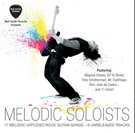Other Vital Techniques
Posted by Shredaholic on 12/20/04 • Categorized as Lessons
The Key Guide To Basic Metal Rhythm Guitar Techniques
3: Other vital techniques
There are many other techniques aside from picking styles which are essential in metal playing.
Palm muting is most probably the most important technique you will use. This is achieved by ‘muting’ the note using the fatty parts of your palm. Simply lower your palm to the string and pick, you will notice that the note sounds dead, and chunky. This is very often used is almost every metal song and is vital to use properly. The amount of pressure put onto the strings can also effect how the note sounds, so use it wisely. Along with these, it can also help in your playing, as it prevents the string from vibrating as much as an open note would, allowing you to hit the string again more easily. It also makes the note sound very clearly if played repeatedly, and prevents the note from ringing which effects the clarity of your playing very much.
The use of your left hand also plays a vital role in rhythm guitar.
Reliving the pressure on the string after hitting the note will stop the note from being heard, you do not necessarily have to take your finger off the string, but simply lift it to a point where the note can no longer be heard.
Harmonics sometimes play a role in metal. Common belief is that harmonics can only be played on certain frets, but this is not the case. By placing your finger on top of the fret, but not putting much, if any pressure on, you can get different sounds. Try it with different frets to practice, a good way to begin this would be E on the A string (7th fret). It should produce a high pitched almost electronic sound.
Hammer-ons and pull-offs are also common in many styles. Many associate them with lead playing, but they appear in rhythm just as much. Simple place your finger onto another fret after hitting a note (on the same string) with hitting the note again to achieve a hammer-on. Pull-offs are done by letting go off the note, upon doing s another note will sound. Try doing it with open notes by simply letting go after hitting, and an open note will be heard. You can do this to other fretted notes too, by releasing the first note, and having another finger on a lower note of the same string.
There we have several of the basic techniques found in rhythm guitar playing. This guide will be updated and more guides will come, featuring more information on how to improve, and understand, your guitar style.
© Lee Morris-Tiley 2004
Related posts:
Comments are closed.










